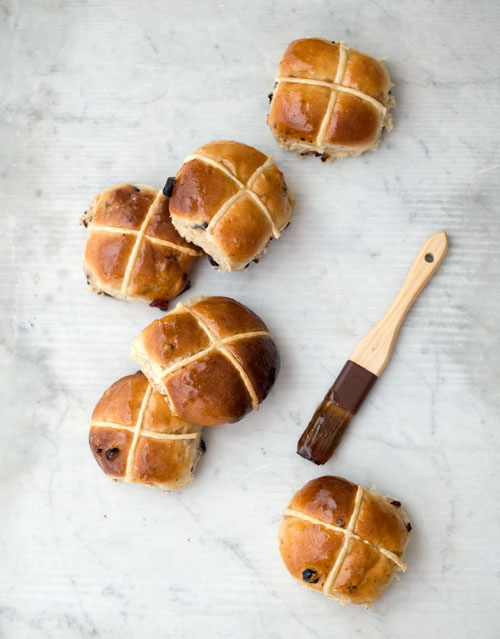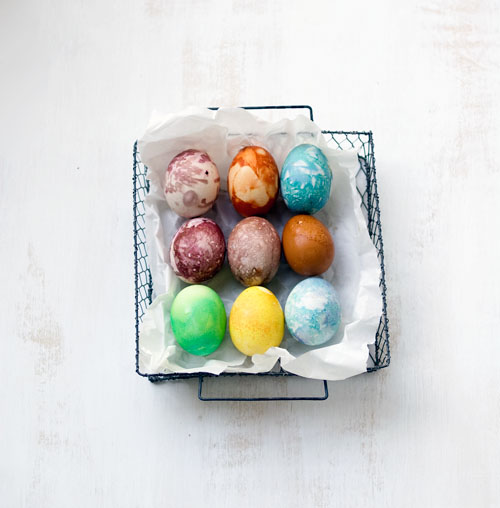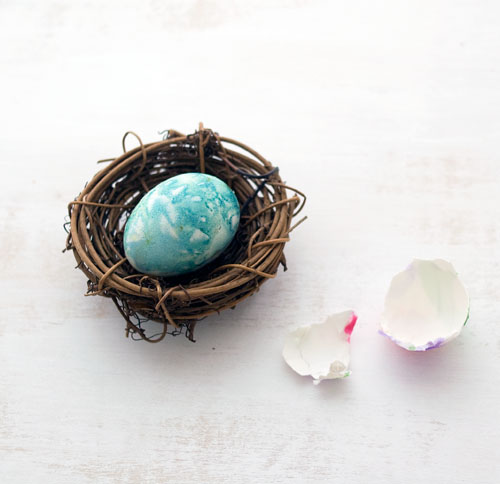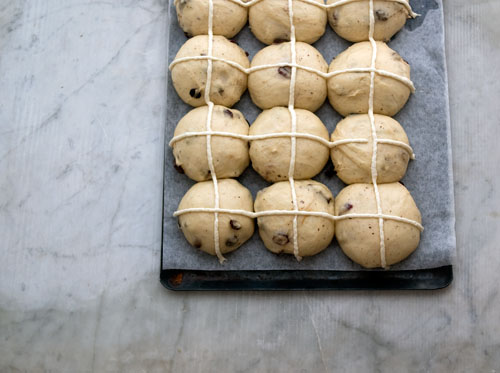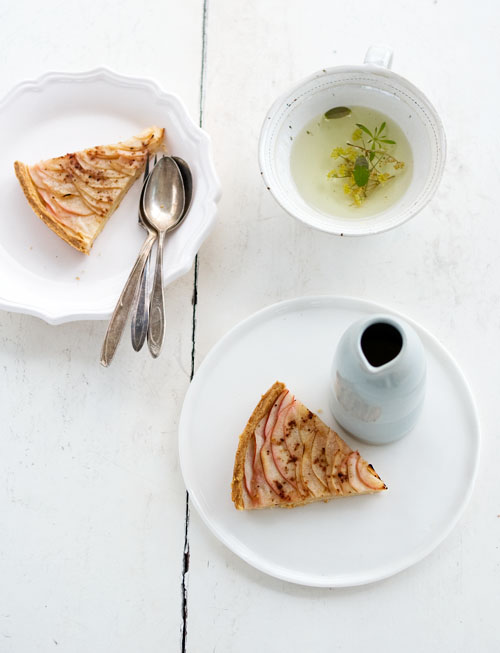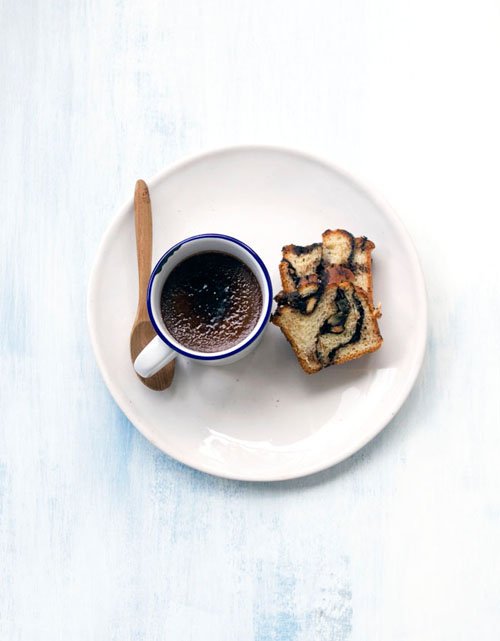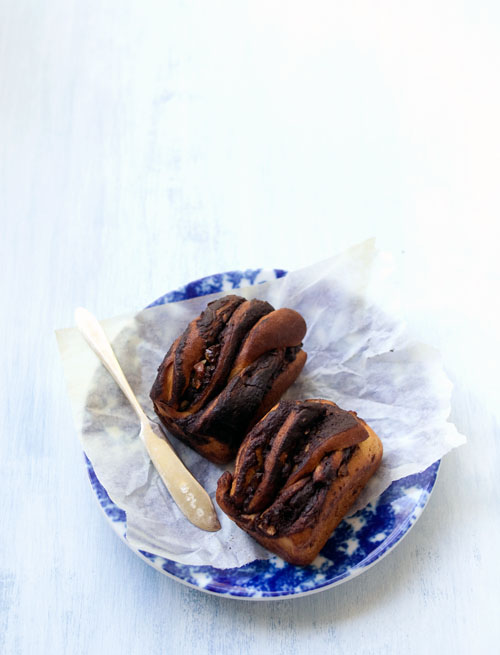Of Easter eggs and buns
Every Easter, for quite a few years now, I’ve been trying out different hot cross bun recipes. It’s not something I intentionally set out to do, but all the same has turned into a delicious, much-anticipated annual experiment. One that rarely results in any duds and instead quite often uncovers a few gems.
Since I also happen to have the luxury of time this year, I decided to try my hand at decorating Easter eggs. For this, a batch of eggs were dyed with food scraps (pictured above) and the remainder were covered with patterns using a neat trick as seen here.
Of the two techniques, using food scraps to obtain natural dyes was the most interesting, especially for a big kid like myself. The eggs were boiled until just cooked, cooled, then left to soak for several hours in jars of various dyes. The unpredictable nature in which the colour would form and be absorbed into the shell meant that the pattern on every egg you scooped out of the dye bath, was always a surprise. So far the best colours have been extracted from the use of boiled onion skins (orange brown), red cabbage leaves (shades of blue and purple) and turmeric (bright yellow).
Once you’re done admiring them though, you’re then left with the task of eating eggs for the remainder of the week – an idea rendered somewhat more palatable by having started with good quality, organic, free-range eggs, and the fact that the eggs weren’t boiled to the point of dry and greying yolks. We had yellow tinted eggs with a noodle salad for dinner last night. Very delicious.
But back to the buns. This year I’ve tried a recipe using an Asian bread baking method that incorporates a water roux also known as Tangzhong, into the dough. The roux supposedly helps retain moisture in the dough, resulting in a fluffy baked product that also doesn’t dry out as quickly. Two dozen very consistent, great tasting batches later and I think this just might be the recipe that puts an end to my hot cross bun baking experiments for good.
Of course, if there was some way to logically incorporate boiled eggs and baked buns into more of our meals, you’d probably find me still experimenting for many years to come.
Hot Cross Buns :
(makes 12; slightly adapted from this recipe)
For the water roux :
25g flour
125g water
For the dough :
350g flour
35g sugar
5g salt
1 egg
125g milk
1 sachet dried yeast
30g soft unsalted butter
100g raisins
20g chopped dark chocolate
1/2 teaspoon ground cinnamon
1/4 teaspoon ground allspice
To decorate : flour paste for crosses and a glaze of your choice (Here I’ve used an Earl Grey tea jelly. Alternatives include : warmed apricot jam, lemon or vanilla-flavoured sugar syrup or a reduced malt/maple syrup)
First make the roux. Whisk the flour and water together in a small pan over medium heat. Cook, whisking at all times, until the mixture thickens. If you’re unsure as to what this is supposed to look like, you can also test the temperature of the thickened mix. It should have reached 65’C. Once it has thickened, scrape the roux into the bowl of your mixer (it should weigh 120g). Place some cling film over the surface of the roux and allow it to cool to room temperature.
When the roux has cooled down, add the egg, milk and sugar to the bowl, followed by the yeast, flour, salt and spices. With the dough hook attached, start mixing the dough until it comes together and looks smooth, about 2 minutes. Add the butter and continue mixing on medium speed for another 2-3 minutes. Mix in the dried fruit and chopped chocolate, then cover the bowl and leave the dough to prove for an hour or until doubled.
Once doubled, divide the dough into 12 pieces (12 x 65g). Roll into balls and arrange them roughly 1.5 inches apart on a lined tray. Cover lightly with greased cling film and allow to prove again for another hour. Meanwhile, make your flour paste (see note below), place it into a piping bag and set aside.
Once the buns have proved, pipe the crosses on the buns and bake them in a preheated 190’C oven for 14 minutes. When they are ready, they should be golden brown and sound hollow when tapped. Remove them from the oven and brush with a glaze of your choice while they are still warm.
[Note : Make a flour paste by mixing 8 tablespoons of flour to roughly 4 tablespoons of water to achieve a pipe-able paste. This is for the crosses on the buns, and is more than you will need, because I find it easier to pipe the crosses evenly when there is a decent amount of mixture in the bag. If you think flour paste crosses taste horrible, you can leave them out and instead pipe a sugar or white chocolate cross on each bun once they are cooled]/strong
Tags: bread, dried fruit, Easter, hot cross buns, spices

